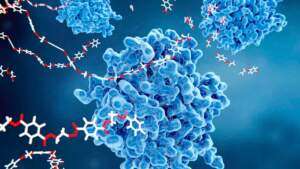Your pancreas plays a significant role in digestion. They also regulate blood sugars. It is located inside your abdomen, just behind your stomach. It’s about the size of your hand. It has a soft texture. The head is the widest part of the organ and lies in the curve of the duodenum, the first division of the small intestine. The left side extends slightly upward called the body of the pancreas and ends near the spleen called the tail.
Table of Contents
ToggleUnveiling the Functions of Exocrine and Endocrine Systems of the pancreas
The pancreas is made up of 2 types of glands Exocrine. The exocrine gland secretes digestive enzymes. These enzymes are needed to digest most carbohydrates, proteins, and fats in food. These pancreatic enzymes are responsible for the majority of the digestion process.
Exocrine
The exocrine gland, a prominent component of the pancreas, serves a fundamental role in digestion. This gland is responsible for secreting digestive enzymes, which are indispensable for breaking down various macronutrients in our food. These digestive enzymes are particularly adept at targeting and catalyzing the breakdown of carbohydrates, proteins, and fats, making them more readily absorbable.
In the intricate dance of digestion, the exocrine pancreatic enzymes act as critical players, breaking down complex food molecules into simpler forms. Amylases, for instance, efficiently target and hydrolyze carbohydrates like starches into sugars, facilitating their absorption in the small intestine. Proteases, another group of enzymes secreted by the exocrine glands, play a critical role in cleaving complex protein structures into amino acids, the building blocks essential for numerous physiological functions.
Endocrine
The endocrine gland, which consists of the islets of Langerhans, secretes hormones into the bloodstream. Several hormones like insulin, glucagon, and somatostatin are rfromsed form the pancreas and have an importain managingement of blood sugar.
Pancreatic Enzymes

Exocrine glands of the human pancreas produce 2~3 L/day of pancreatic juice, an alkaline isotonic fluid that contains various digestive enzymes and other proteins such as lactoferrin and pancreatic stone protein. Pancreatic acinar cells occupy ~90% of the exocrine glands. These juices travel through your pancreas via ducts. They empty into the upper part of your small intestine, called the duodenum.
Pancreatic acinar cells, constituting approximately 90% of the exocrine glands, are the primary contributors to the synthesis and release of these essential pancreatic secretions. These acinar cells are specialized for synthesizing and secretion of digestive enzymes, playing a pivotal role in breaking down food components for optimal absorption.
Once synthesized within the acinar cells, the pancreatic juice traverses the exocrine glands through an elaborate network of ducts. These ducts serve as conduits, guiding the pancreatic juice through the intricate labyrinth of the pancreas. As this fluid makes its way through the exocrine glands, it assimilates the diverse enzymatic arsenal crucial for the digestion of macronutrients.
These are the different enzymes Lipase
This enzyme works with your liver’s bile to breakdown fat in your diet. If you don’t have enough lipase, your body will have troubleabsorbing fat and the essential fat-soluble vitamins (A, D, E, K). Symptoms of poor fat absorption include diarrhea and malabsorption.
- Trypsin and Chymotrypsin: This enzyme breaks down proteins in your diet. It also helps protect you from germs that may live in your intestines, like certain bacteria and yeast.
- Amylase: This enzyme helps break down starches into sugar, which your body can use for energy.
Pancreatic Hormones
Pancreatic hormones constitute a crucial aspect of the multifaceted role played by the pancreas in maintaining homeostasis within the human body. Unlike digestive enzymes, which are released into the digestive system to facilitate the breakdown of nutrients, hormones from the pancreas are deployed into the bloodstream, orchestrating intricate communication with various organs and tissues throughout the body and their role in the digestive tract.
The endocrine function of the pancreas primarily revolves around the secretion of two essential hormones
insulin and glucagon. These hormones profoundly influence glucose metabolism, pivotal in regulating blood sugar levels and ensuring a delicate balance within the body’s energy utilization processes Insulin, a hormone secreted by the beta cells of the pancreatic islets of Langerhans, acts as a master regulator of glucose homeostasis. When blood sugar levels rise, such as after a meal, insulin is released into the bloodstream. This hormone facilitates glucose uptake by cells, particularly muscle and adipose tissue, promoting its conversion into energy or storage as glycogen in the liver and muscles. By reducing blood glucose levels, insulin contributes to the prevention of hyperglycemia. It provides cells with the energy they need for various physiological functions. Conversely, when blood sugar levels drop, the alpha cells of the pancreatic islets release glucagon. This hormone stimulates the breakdown of glycogen into glucose in the liver, releasing it into the bloodstream to elevate blood sugar levels. Glucagon thus plays a crucial role in preventing hypoglycemia by ensuring a steady supply of glucose to meet the body’s energy demands. Pancreatic hormones include Insulin. This hormone is made in cells of the pancreas known as beta cells. Beta cells make up about 75% of pancreatic hormone cells. Insulin is the hormone that helps your body use sugar for energy. Without enough insulin, your sugar levels rise in your blood, and you develop diabetes. Glucagon. Alpha cells make up about 20% of the cells in your pancreas that produce hormones. They produce glucagon. If your blood sugar gets too low, glucagon helps raise it by sending a message to your liver to release stored sugar.


